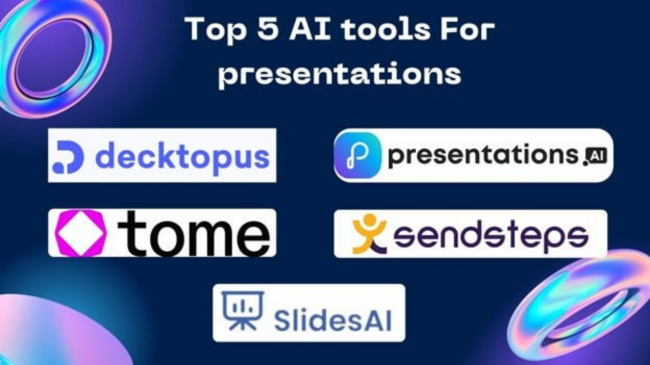What makes a workplace feel safe and satisfying isn’t just a well-lit exit sign or a decent coffee machine. It’s the systems, tools, and approaches behind the scenes that quietly reduce risk, train smarter, and keep employees engaged without adding friction to their day. These aren’t flashy perks or one-off policies. They’re meaningful innovations that are solving long-standing problems at the intersection of safety and satisfaction. For business and tech leaders, knowing what’s working and why can shape how you build the kind of workplace people want to be part of. Let’s look at five shifts worth watching.
What’s Fueling the Wave of Workplace Tech Innovations Right Now
It’s not just big budgets or clever engineers pushing change. The global appetite for tech innovations has exploded because the way we work keeps changing faster than most systems can adapt. The need for real-time data, better integrations, and simpler user interfaces isn’t coming from the IT department, it’s coming from the factory floor, the logistics warehouse, and even the HR desk. As highlighted in a recent overview of global shifts in software and hardware, everything from APIs to blockchain is feeding a growing demand for smarter, more resilient systems.
According to Forbes’ analysis of workplace tech trends, advancements in AI, APIs, and blockchain are accelerating how businesses track safety, manage workflows, and integrate employee well-being directly into operational design.
This isn’t just about fancy dashboards or backend automation. It’s about cutting down on lag time when things go wrong, giving workers safer tools to do their jobs, and creating feedback loops that actually work. The companies leading the charge aren’t always chasing headlines. They’re solving practical problems, like eliminating blind spots in workplace safety protocols or reducing burnout by giving employees more control over their schedules.

Making Safety Training Smarter, Not Harder
One of the most effective shifts in workplace safety has been the move toward on-demand, self-paced learning tools, such as online OSHA compliance training. For companies juggling high turnover, seasonal hires, or dispersed teams, traditional training methods just don’t hold up as well anymore. Online training platforms can take a lot of the stress and logistical headaches out of providing opportunities for employees to get their OSHA 10 and 30 cards. Workers can earn these crucial certifications more quickly, too, since they don’t have to wait for a quarterly seminar or a live instructor.
This kind of flexibility matters more than most managers realize. A new warehouse hire can jump into training as soon as they’re onboarded. A night shift worker doesn’t have to rearrange their schedule to meet a safety requirement. And for the business, it means better compliance records, fewer injuries, and a lot less scrambling when auditors show up.
As platforms like PDF Candy have shown in productivity workflows, digital solutions that prioritize simplicity and user autonomy can significantly improve both efficiency and satisfaction, and workplace training is no exception.
Wearables That Work for the Worker
If you haven’t looked at the wearables market in a while, you might still think of them as glorified step counters. But in industrial settings, wearables have evolved into real-time safety tools. Some track body position to detect when a worker is lifting unsafely. Others monitor heart rate and temperature to alert supervisors if someone might be headed toward heat exhaustion.
According to Statista’s report on wearable technology adoption, industrial wearables are seeing double-digit growth as companies realize their dual value: preventing injuries and improving worker morale.
These tools are designed to prevent injuries before they happen. And when they’re implemented thoughtfully, they can help workers feel more looked after than looked over.
Smart Environments That Actually Respond
The rise of IoT sensors has made it possible to build environments that respond to real-world conditions in real time. Sensors can track air quality, noise levels, light exposure, and temperature, alerting facilities teams before anyone complains. In high-risk industries, these same systems are used to detect gas leaks, chemical exposure, or unsafe humidity levels before they create serious problems. The beauty of these setups is that they’re always on and never distracted, making them a strong partner in maintaining day-to-day safety.
When employees see that their environment changes based on their needs, without them having to constantly flag issues, it builds trust. The space starts to feel like it was built for them, not just around them.
In design philosophy, this shift mirrors the same AI-first adaptability seen in platforms like SupaWork AI, where automation enhances human experience rather than replacing it.
Giving Workers a Voice Without Slowing Down Operations
Employee feedback has come a long way from the anonymous suggestion box. Tech-enabled feedback tools now let workers report safety concerns, request mental health support, or suggest improvements through mobile apps or kiosks on site. These systems keep a record, route the concern to the right department, and often loop back with a response. That kind of transparency can be a game-changer for culture and morale.
According to a ResearchGate study on real-time anonymous staff feedback, transparent reporting systems significantly improve engagement and reduce turnover.
It’s also practical. When leadership gets early warnings about broken equipment, unsafe stairwells, or bottlenecks that create stress, they can address them quickly instead of waiting for a problem to snowball. Workers see that their input leads to action, not just paperwork. And the business gets ahead of both safety risks and disengagement.
Conclusion: The Future of Safety and Satisfaction Is Connected
Workplace safety and satisfaction are no longer separate initiatives. They’re two sides of the same innovation strategy.
From AI-driven wearables to IoT environments and digital-first training, the companies leading this shift are turning safety into a shared, data-informed responsibility.
By combining smart systems, transparent communication, and adaptive learning, organizations are building safer, happier, and more resilient workplaces, where technology doesn’t just manage people, but empowers them.
Post Comment
Be the first to post comment!





